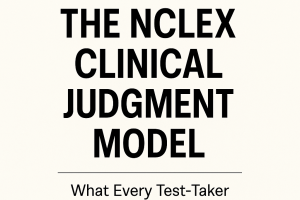RESPIRATORY DISORDERS: COPD AND ASTHMA MANAGEMENT.

Chronic respiratory disorders like Chronic Obstructive Pulmonary Disease (COPD) and asthma are prevalent conditions that significantly affect the quality of life for millions worldwide. Although both conditions involve breathing difficulties, their causes, symptoms, and management strategies differ. Proper management is essential to reduce symptoms and improve overall well-being. This blog will provide an overview of both COPD and asthma and offer guidance on how to manage them effectively.
Understanding COPD
COPD is a progressive lung disease characterized by obstructed airflow, often caused by long-term exposure to irritants such as cigarette smoke, air pollution, or workplace chemicals. The disease encompasses two main conditions: emphysema, which involves damage to the air sacs in the lungs, and chronic bronchitis, characterized by inflammation and excess mucus production in the airways.
Symptoms of COPD include:
– Persistent cough with mucus
– Shortness of breath, especially during physical activity
– Frequent respiratory infections
– Wheezing and tightness in the chest
Management of COPD:
– Smoking cessation: Quitting smoking is the most crucial step in slowing COPD progression.
– Medications: Bronchodilators and inhaled corticosteroids can help open airways and reduce inflammation.
– Pulmonary rehabilitation: Exercise, nutrition, and education programs help improve lung function and quality of life.
– Oxygen therapy: In advanced cases, supplemental oxygen may be necessary.
– Lifestyle changes: Maintaining a healthy diet and avoiding further lung irritants can significantly improve symptoms.
Understanding Asthma
Asthma is a chronic condition where the airways become inflamed and narrowed, leading to breathing difficulties. It can be triggered by allergens, environmental irritants, or respiratory infections. Unlike COPD, asthma is often reversible, with patients experiencing intermittent symptoms.
Symptoms of asthma include:
– Shortness of breath
– Chest tightness
– Wheezing
– Coughing, especially at night or early morning
Management of asthma:
– Avoiding triggers: Identifying and avoiding allergens or irritants that trigger asthma attacks is critical.
– Medications: Quick-relief inhalers (bronchodilators) and long-term control medications (inhaled corticosteroids) are commonly used.
– Asthma action plan: Working with a healthcare provider to develop a personalized asthma management plan can help manage symptoms and prevent attacks.
– Regular monitoring: Using a peak flow meter to monitor lung function can help detect changes and prevent asthma exacerbations.
Key Differences Between COPD and Asthma
While COPD and asthma both affect breathing, they differ in several ways. COPD is usually caused by long-term exposure to irritants and is typically not reversible, while asthma is often triggered by allergens or irritants and can be managed with proper treatment. Additionally, COPD primarily affects older adults and progresses over time, whereas asthma can affect individuals of all ages.
Questions and Answers
1. What is the primary cause of COPD?
– COPD is primarily caused by long-term exposure to lung irritants such as cigarette smoke, air pollution, or occupational chemicals.
2. How is asthma different from COPD?
– Asthma is characterized by reversible airway inflammation and can be managed with proper treatment, while COPD is usually irreversible and worsens over time.
3. What are common symptoms shared by both COPD and asthma?
– Both COPD and asthma may cause shortness of breath, wheezing, chest tightness, and coughing.






